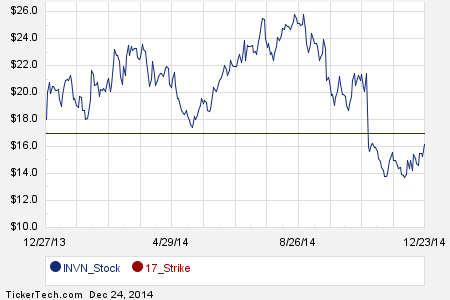An Introduction to Stock Options Knowledge Center
Post on: 10 Апрель, 2015 No Comment

An Introduction to Stock Options
S&P Capital IQ
Stock options provide advanced investors with additional opportunities for potentially rewarding returns. But stock options do possess risks that require an in-depth understanding of how they work. This article provides a basic overview of stock options.
An option is a contract entitling the option purchaser to buy or sell the underlying stock at the stated exercise price. The right to exercise lasts for a stated period of time until the expiration date. Options are used to hedge against a price decline, to lock in a future purchase price, or to speculate on the future price of a stock.
Options come in two general forms: calls and puts. A call option gives the holder the right to buy the underlying stock; a put option gives the holder the right to sell the underlying stock. A call option is valuable to the extent that the exercise price is below the market value of the underlying stock at the time the option is exercised. A put option becomes more valuable as the price of the stock moves below the exercise price.
Employee stock options are call options granted by an employer as part of an employee compensation plan. Employee stock options may be tax-qualified incentive stock options (ISOs) or nonqualified stock options (NSOs). Under certain conditions, ISO gains are taxed as long-term gains, whereas NSO gains are taxed as ordinary income.
Although options can be part of an effective investment strategy, they are leveraged investments and carry significant risk. Before implementing an investment strategy using options or before entering into any equity arrangements with an employer, consult your tax advisor.
Key Points
Options on stocks and stock indexes are derivative instruments. Stock investors may use stock options to hedge against a price decline, to lock in a future purchase price, or to speculate on the future price of a stock. Employees may also receive stock options through an employee compensation plan. For employees, stock options represent the potential for growth in value and the possibility that the increase in value will be taxed at a favorable capital-gains tax rate.
The Basics of Stock Options
A stock option is essentially a contract that gives one party the right to purchase or sell a stated number of shares of a stock at a specified price. The price at which the shares may be purchased or sold is known as the strike or exercise price. The right to exercise lasts for a stated period of time, which may be months or years, until the expiration date. If not exercised on or before the expiration date, the option expires.
Options come in two forms: calls and puts. A call option gives the option purchaser the right to buy the underlying stock. A put option gives the option purchaser the right to sell the underlying stock.
A call option is valuable to the extent that the exercise price is below the market value of the underlying stock. For example, if a stock is trading at $100 per share and you hold a call option entitling you to buy the stock at $72 per share, your option has an immediate value to you of $100 — $72 = $28, before taking into account any tax consequences or transaction fees.
A put option is the mirror image of a call option. A put option becomes more valuable as the price of the stock moves below the exercise price. For example, if you have purchased a put option with a strike price of $90 and the stock price moves to $80, you may choose to exercise the option and sell the underlying stock at $90 for an immediate unrealized per share gain of $90 — $80 = $10.
With both calls and puts, the purchaser of the option has the right to exercise, while the option seller is obligated to respond if the option is exercised. The option purchaser pays an upfront fee known as the premium to the option seller in return for the right of exercise. The option buyer has a known investment risk — if the option expires unexercised, the purchaser of the option recognizes the premium paid as a loss. Conversely, the option seller undertakes potentially unlimited market risk in return for the premium received.
Components of an Options Value
Option contracts are traded on regulated markets, and their values may fluctuate throughout the trading day. The price of an option at any given time is based on several factors, including the current price of the underlying stock, the price volatility of the underlying stock, the time to maturity, and interest rates.
Intrinsic value — the intrinsic value of the option is the difference between the exercise price and the price of the underlying security. An option is in the money when the intrinsic value is positive.
Volatility — part of an option’s value reflects the volatility of the underlying security. If a stock price is highly volatile, there is a relatively greater chance that the option will be in the money at expiration, and therefore, the option will carry a higher premium than an option on a less volatile stock.

Time value — the more time remaining until the expiration date of the option, the greater the potential for a significant change to occur in the price of the underlying security and the greater the value of the option. Time value diminishes as the expiration date of the option approaches.
Interest rates — the option premium is a cash payment that can be invested by the option seller to generate interest income. Higher interest rates present opportunities for potentially greater earnings on the option premium.
Intrinsic value, volatility, and time value can significantly affect an option’s market value. An option with an exercise price above the current market value of the underlying security may still have considerable potential value.
For example, if you hold a call option with an exercise price of $72 and the current share price is $65, your option would generate a loss if it were exercised today. However, as stated above, option contracts typically are valid for months or years, until the stated expiration date. The time value of the call option is the potential that the share price will rise over time and eventually exceed the option exercise price.
Employee Stock Options
Employee stock options are call options granted by an employer as part of an employee compensation plan. There are two main types of employee stock options: incentive stock options and nonqualified stock options. Incentive stock options offer special income tax benefits to the employee.
An incentive stock option (ISO) must meet a number of criteria to qualify for favorable tax treatment. As long as the shares acquired through an ISO are held for at least one year following exercise and are not disposed of until at least two years after the option is granted, the difference between the option price and the sale price is taxed as a long-term gain. The tax is applied at the sale of the stock. If you don’t meet the one-year holding-period requirement, the transaction is considered a disqualifying disposition and your gains are taxed as ordinary income.
A nonqualified stock option (NSO) is an option that doesn’t meet the ISO criteria. Gains on NSOs are taxed as ordinary income at the time of exercise.














